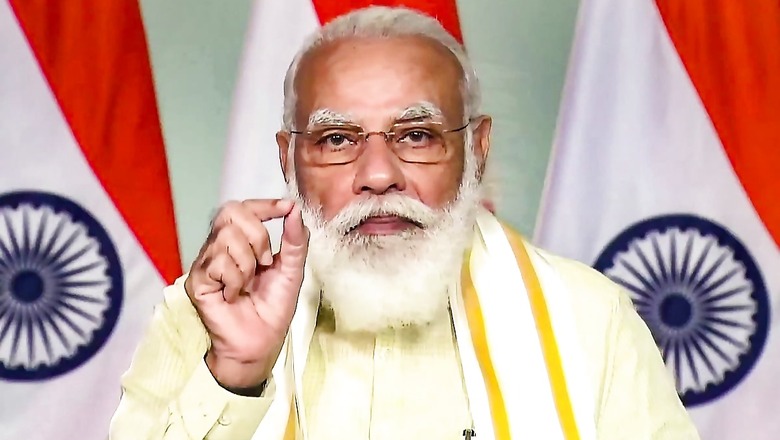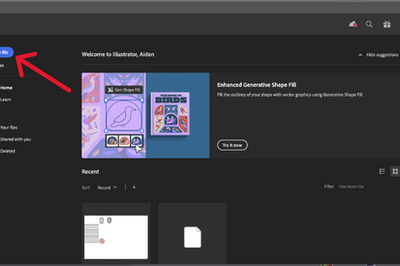
views
The results of the recent Bihar election and the consequent reaffirmation of popularity of Prime Minister Narendra Modi, despite what seemed like a perfect storm arrayed against the NDA government, has had multiple consequences. One the one hand, the infighting within the Congress, which had been put on hold, seems to have again started and with renewed vigor. On the other, the commentariat in Delhi’s elite circles seem to have finally accepted, though grudgingly, that among various sections of people who vote overwhelmingly for Modi, one definite block is that of the women voters.
It is not as if Modi is not popular among other sections or demographics of the society, for if that would have been the case he would not have been winning elections after elections for close to two decades now. But the fact that Modi has been able to successfully create a national voter base among women voters, cutting across class, regional and as evidence suggests even across religious divide, has been evident for some time but the commentariat has finally accepted it after the Bihar results.
But how did this come out? How was it that it was Modi, among all politicians, who managed to create a distinct woman vote bank for himself and his party? Some of the answers are obvious and have been so stated by many post poll analysts and pollsters. The welfare schemes that Modi has first thoughtfully conceived, then managed to successfully execute, obviously contribute immensely to his popularity.
That he comes from a humble background also helps him better appreciate the nature of the welfare programs that should get priority and then be the focus of his execution skills. Hence the focus on schemes such as Ujjwala, Jan Dhan, Mudra, Pradhan Mantri Aawaas and Jan Suraksha among others, all of which have overwhelmingly benefitted women.
The empowerment that these schemes have provided, right from the time they were conceived, especially to those at the margins, have now been fairly well documented. The impact of these schemes, however, became even more pronounced when a global calamity like COVID-19 struck. It was the web of these schemes that came to the rescue of crores of women and sustained millions of families and helped prevent severe economic disruption from turning into economic distress.
Consider the following efforts undertaken just during the COVID-19 induced lockdown. As many as 19.86 crore women Jan Dhan account holders received Rs 500 each in their account per month for a period of three months. A total of Rs 30,000 crore was transferred to women during the peak of lockdown period. Rs 1,400 crore was disbursed to about 2.82 crore old age person, widow and disabled people. Each beneficiary received an ex-gratia cash of Rs 1,000 under the scheme.
Women received free LPG refills for three months under the Ujjwala Yojana with an outlay of almost 5,000 crore. In totality, over 11.97 crore LPG cylinders were provided for free. The Garib Kalyan Yojana of providing free rations during the pandemic induced lockdown to over 80 crore people for eight months also overwhelmingly benefitted women, as it is they who are in charge of the kitchen.
But providing economic relief during a health pandemic cannot be the sufficient reason to build an enduring voter base among women. It requires sustained welfare efforts for a much longer period. Among a surfeit of such achievements, consider just a select few.
Sex ratio at birth has improved from 922 in 2011-12 to 965 in 2017-18 in urban areas. Securing the future of the girl child through Sukanya Samriddhi Yojana, with 54,000 crore deposits, has met with tremendous success. Gross enrollment ratio of girl child is now higher than boys at all levels of education: elementary level – 94.32% girls compared to 89.28% boys; secondary level – 81.32% girls compared to 78% boys and finally at higher secondary – 59.7% girls compared to 57.54% boys.
The percentage of girls getting merit-cum-means scholarships has risen from 32.97% in 2014-15 to 41.96% in 2019-20.
Just these four initiatives, apart from a host of other like building separate toilets for girl child in every school in India have fundamentally transformed the lives of millions of young girls, especially those at the margins.
Women can see that Modi’s efforts are directed at not just securing the present but also ensuring a brighter future. Young girls who are benefiting from these schemes are not voters. There is no direct benefit to be had for Modi by focusing on the welfare and the success of the girl child. But it is the right thing to do and so therefore Modi does it. It is this genuine intent that gets across and creates that connect.
At a more fundamental level, in addition to the success of these initiatives which have undoubtedly delivered, it is the personal connect that Modi has built that resonates across the country and in a sense makes women identify with him. There are several facets to this symphony between what Modi represents as a political phenomenon and what women face in their own personal life, that helps build this connect.
First, just like women, nothing has come easy in life to Modi and when it has, he has been denied by his opponents the respect and the dignity that he deserves. He has had to work harder than others and yet not been given the same credit that a more entitled dynast or a connected politician gets for just turning up.
This struggle resonates with the everyday life of women who face similar challenges in their personal and professional lives – of not being treated equally and denied due dignity and respect. Therefore, women identify with Modi who is someone just like them and who succeeds despite obstacles while facing almost similar challenges like them.
Second, despite the system being loaded against Modi, he has never turned negative or nihilistic. His rhetoric is never pessimistic or rejectionist. He is not out to wreck the system but to reform it, to rebuild it and to make it work. Again, a trait which women find resonating with their own life experiences.
Third, Modi is neither reckless nor profligate with finances. One direct consequence of this of course has been that he has been able to control inflation, which had skyrocketed into double digits under the Congress regime. But on a more instinctive level, this again resonates with those women who have to similarly balance their own household budgets and do not have the luxury to be reckless.
Fourth, Modi understands and displays the benefits of having immense patience. When to keep counsel to oneself; how to just lie low and keep on working and working till the right time comes; how not to be distracted from the larger goal by transitory events – all are traits that define Modi in many ways and are simultaneously the life story of almost all women who manage households in India.
Fifth, in essence, the politics of Modi is about our family – the Indian family. Just as an illustration, Modi is from Gujarat, contest elections from Uttar Pradesh but has spent substantial amount of energy, time and political capital in the North East. A normal politician would not do it, and indeed none before Modi did it and that is why that region remained so underdeveloped. Others just looked it from their political benefit lens. Modi looks at it as one caring for every member of the family, which obviously resonates with the role women play in their life every day.
Sixth, in ambition and aspiration Modi never ever sets small targets. They are not unachievable or fantastical either, but they do require one to stretch extra and work hard. In this, he is again not different from women who find themselves playing a similar role within their families – of being the chief motivator and the benevolent monitor and of being the cheerful encourager of every success and the silent inspiration behind every minute of extra work put in.
In essence, it would be a fallacy to presume that the pan India voter base that Modi has built among women is just a function of the benefits schemes. It is a much deeper bond that springs from the core personality traits of Modi which gets reinforced by the example of a lifetime of living by those very same traits. It is a unique phenomenon which has no previous parallels and unlikely to be replicated any time soon. What Modi does with this great personal rapport and the consequent political capital would be fascinating to watch.
Read all the Latest News, Breaking News and Coronavirus News here



















Comments
0 comment